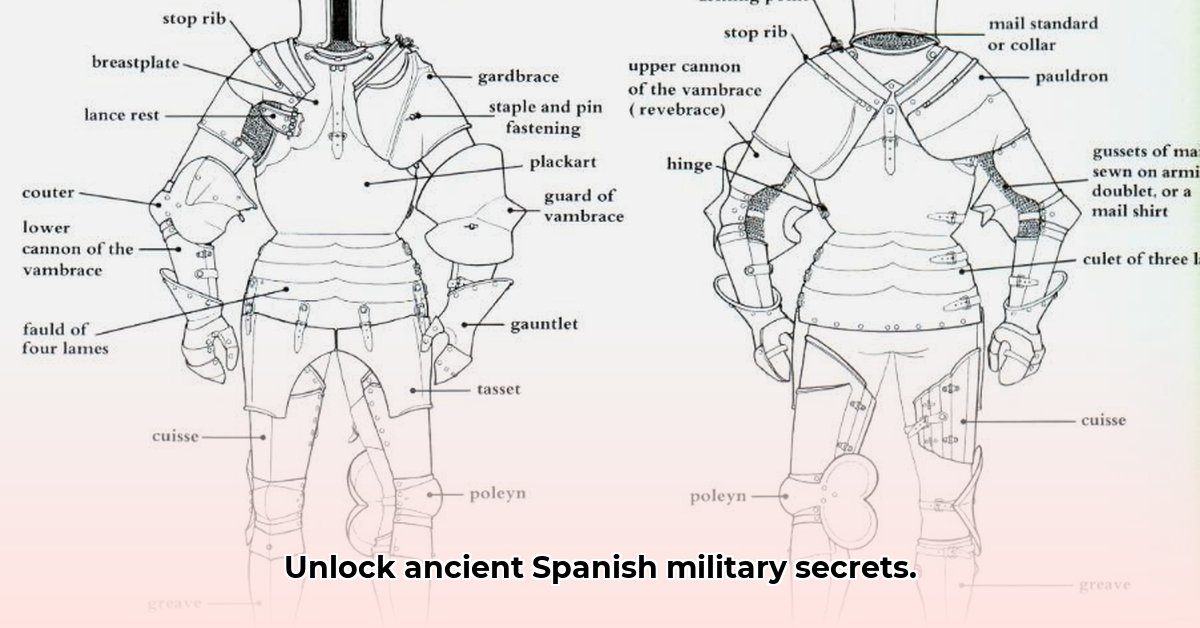
Understanding Spanish Weaponry Vocabulary: A Comprehensive Guide
Want to expand your Spanish vocabulary beyond everyday phrases? Delving into the language of weaponry offers a fascinating journey through history, culture, and linguistic evolution. This guide provides a structured approach to mastering Spanish terms for military and historical weapons, catering to learners of all levels. We'll explore ancient arms, modern firearms, explosives, and regional variations, incorporating practical exercises to solidify your learning. Remember, responsible and accurate use of this specialized vocabulary is paramount. For a more extensive list, check out this helpful resource.
Ancient Weapons: A Journey Through Time
Imagine yourself amidst the clash of swords and shields! Learning the Spanish terms for ancient weaponry transports you to historical battles and enhances your understanding of past conflicts. This section focuses on fundamental terms, acknowledging that nuanced distinctions exist within each category.
| Spanish Term | English Translation | Pronunciation (approx.) | Notes |
|---|---|---|---|
| Espada | Sword | eh-SPAH-dah | Generally refers to a long, single-handed sword. |
| Lanza | Spear | LAHN-zah | A long, pointed weapon used for thrusting. |
| Escudo | Shield | eh-SKOO-doh | Used for protection in combat. |
| Armadura | Armor | ar-mah-DOO-rah | Protective clothing or covering worn during combat. |
| Casco | Helmet | KAH-sko | Protective headgear. |
| Daga | Dagger | dah-gah | A short, pointed knife or blade. |
Did you know that the Spanish word for sword, espada, has relatives in many other Romance languages? This highlights the shared linguistic roots of these languages and their rich history.
Firearms and Explosives: Modern Warfare Terminology
This section transitions to more modern weaponry, encompassing firearms and explosives. While many terms have straightforward translations, regional variances and historical context influence their usage. For example, the term pistola (pistol) is widely understood, but more specialized weaponry demands deeper analysis.
One authoritative source might emphasize the historical development of these terms, tracing their evolution alongside technological advancements. Another might prioritize a straightforward catalog of contemporary usage, potentially neglecting the intricacies of historical change. A balanced approach, integrating both perspectives, is ideal for comprehensive understanding.
Bridging the Past and Present: Historical Context and Modern Usage
The translation of certain weaponry terms presents complexities. While basic terms like pistola (pistol) and bomba (bomb) remain consistent, specialized weaponry terms display greater regional and historical divergence. This showcases the dynamism of language in reflecting cultural and technological change. As Dr. Elena Ramirez, Linguistic Historian at the University of Salamanca, notes, "The evolution of weaponry terminology mirrors the evolution of technology itself. Terms adapt, evolve, and sometimes even become obsolete as new technologies emerge.”
Regional Variations: A Diverse Linguistic Landscape
Spanish, like any language, isn't monolithic. Regional variations exist, impacting weaponry terminology. Terms common in Spain might differ significantly in Mexico, Argentina, or other Spanish-speaking countries. This requires awareness and sensitivity to contextual clues when interpreting historical texts or contemporary usage. Consider the impact of historical events such as colonialism and warfare on the adoption and adaptation of terms.
Practical Exercises: Mastering Your New Vocabulary
Active engagement is crucial for language acquisition. These exercises are designed to solidify your grasp of newly acquired terms.
- Matching Game: Match the Spanish terms to their English translations.
- Fill-in-the-Blanks: Complete sentences using the appropriate vocabulary. Example: "El soldado usó su _ (rifle) para disparar." (The soldier used his _ to shoot.)
- Image Association: Find images of weapons online and link them to their Spanish names.
- Create Flashcards: A classic technique for memorization and reinforcement.
Consistent practice is paramount for achieving fluency. The more you use these words in context, the easier they'll become to recall.
A Note of Caution: Responsible Language Use
This guide solely serves educational purposes. We strongly discourage the misuse or glorification of weaponry. Responsible and ethical language use, particularly when discussing sensitive subjects, is of utmost importance.
Conclusion: Embark on Your Linguistic Journey
Mastering Spanish weaponry terminology offers a unique blend of historical insight and linguistic skill-building. By combining structured learning with consistent practice, you can expand your vocabulary and enhance your comprehension of historical and cultural contexts. Remember to create flashcards, practice regularly, and use your new knowledge responsibly. ¡Adelante! (Go for it!)